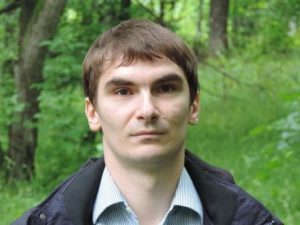
Avant-garde Urban Areas of Eastern Europe in the 1920-1930s: Social Meanings and Everyday Practices
-
- Course Duration:
- September - October 2015

Avant-garde architecture has always contained a unique social message. Large-scale urban experiments the 1920-1930s that took place in different parts of the world were not only directed at establishing new architectural and aesthetic standards, but also on the dissemination of new values, habits, lifestyles, and eventually formed a new society and new people. The avant-garde architecture was not only inseparable from society; it directly transformed it, setting new trends in social life. For this reason, it is essential to understand what we can observe today in avant-garde architecture; they are more than "landmarks" and historical "heritage." What meanings do they demonstrate? What novelties do they allow us to reveal about the surrounding urban space, its arrangement, symbolism and about ourselves?
The objectives of the course were to consider and analyze various forms of action and influence that the avant-garde architectural experiment had on the interwar periods' organization of urban space, rhythms of daily life and general symbolism that created the architectural appearance of modern cities.
Participants of the course included students from Lviv's Universities, local researchers and architects. The course lasted a month and consisted of 8 sessions, which took place twice a week. Classes consisted of lectures with discussions about the major controversial issues. Students performed practical tasks based on the results of the discussions. Participation in the discussions and grades earned on practical assignments determined each student’s final grade.
The subject of discussion in the classroom was constructivist architecture - the sphere where the idea of transforming social reality found its most radical expression. Urban development projects and social experiments that developed in major industrial centers of the Soviet Union were considered, particularly in Moscow, Leningrad, Kharkiv, Minsk, and Sverdlovsk. Participants also compared constructivist experiments with similar trends in the development of functionalist architecture in Eastern Europe as a whole. Special attention in this context was devoted to the peculiarity of strengthening functionalist principles in the urban space of Lviv.
At the end of the course participants toured the avant-garde sites of the city center with Yuliya Bohdanova, architect and lecturer at the Lviv Polytechnic. Students were able to learn not only the history and unique construction features of key functionalist buildings, but also about the major development trends of the city in the interwar period. They saw the big picture of intense change in the urban space of Lviv in 1920-1930s, which embodied the principles of various architectural traditions, approaches, and schools.
The tour was an important step to prepare for the final class, where students presented their individual assignments. The examined objects were a wide selection of avant-garde structures built in Lviv during the interwar period - administrative buildings, cultural centers, individual homes and entire functionalist complexes. The main objective was to find new ways of describing and presenting these architectural sites in contemporary public discourse. Students successfully combined analytical work with a creative approach in their projects. The presentations demonstrated the diversity that exists in the interpretations of avant-garde heritage - from the traditional-historical point of view to its artistic and imaginative meaning. The result was original independent research of many avant-garde buildings in Lviv from a new and sometimes quite unexpected angle. The general discussion after the projects had been presented confirmed the significance and severity of the discussed issue both in terms of finding new ways to work with the architectural heritage and in terms of a work strategy for the urban space in general.
Students who completed the program successfully received certificates of completion.

researcher of the sociology of urban spaces, post-Soviet transformation and methodology of social sciences, author of numerous publications on contemporary institutional research and urban studies. In 2011 he defended his Political Science thesis. He is a participant in a number of research, educational and artistic projects related to the study of avant-garde architecture. Researcher at the Institute of Philosophy and Law, Ural Branch of the Russian Academy of Sciences, lecturer.